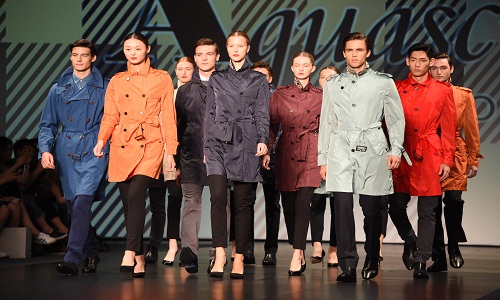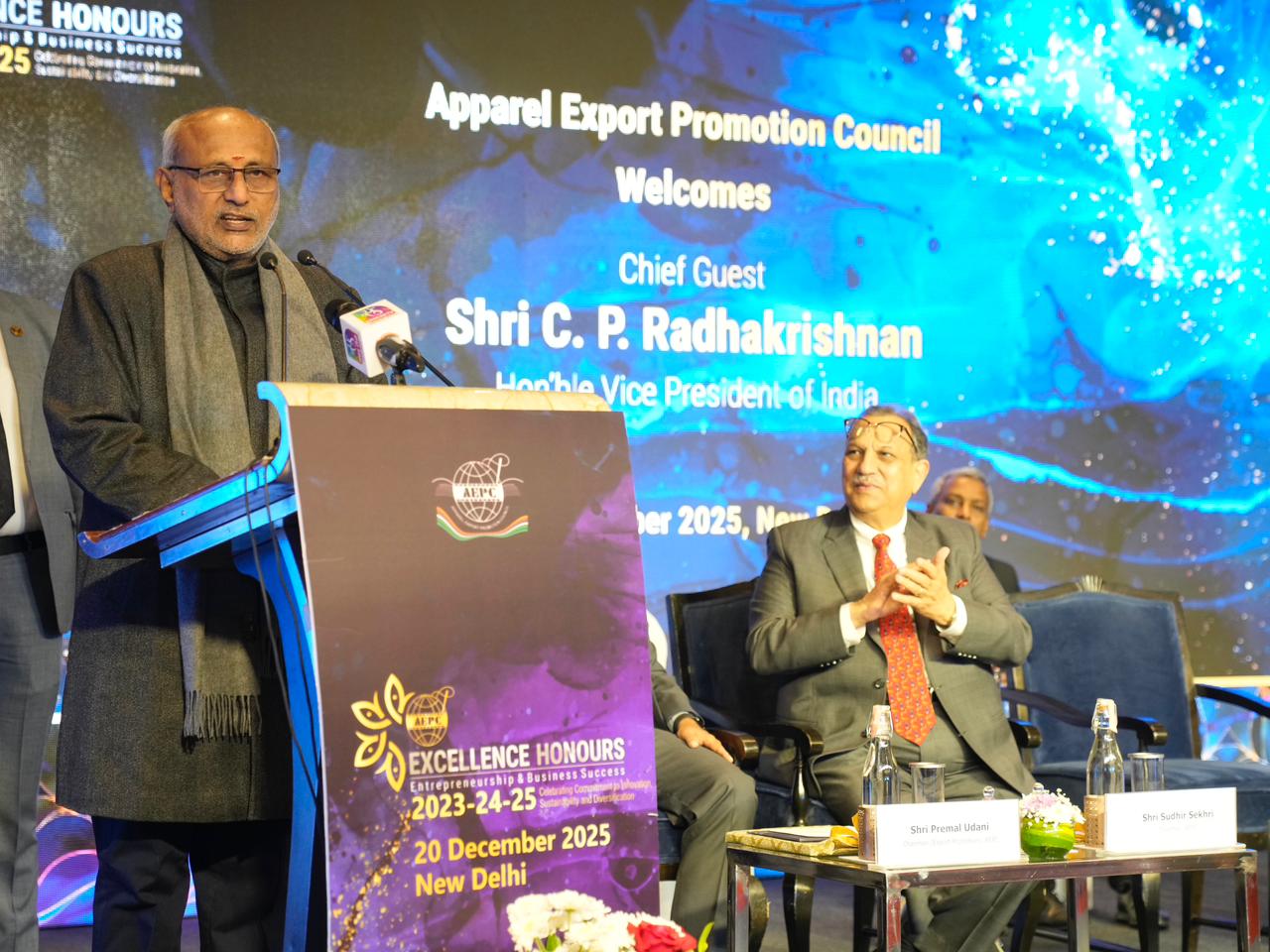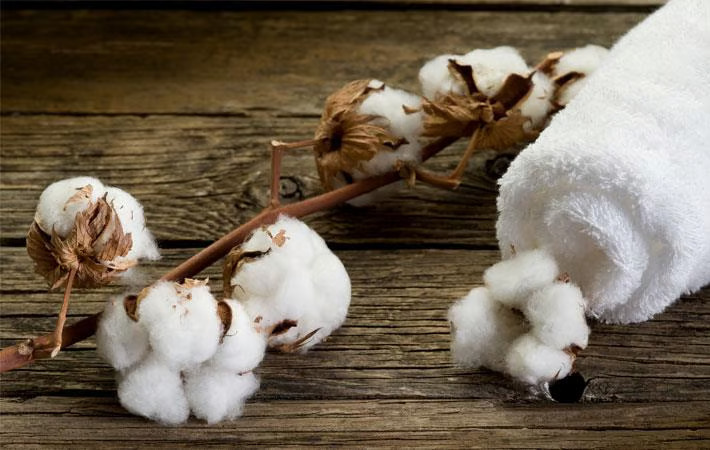FW
California-based anti-slavery charity As You Sow, says one of the most effective ways to curb forced labour in the garment industry is to target cotton spinning mills where workers can provide valuable information about the source of material in the fashion supply chain. The apparel industry in Bangladesh has come under pressure to improve factory conditions and workers’ rights, particularly after the collapse of the Rana Plaza complex in Bangladesh more than three years ago, when 1,136 garment workers were killed.
Following the tragedy, a number of initiatives were launched by global brands and charities to promote openness and safeguard employees, from ensuring the safety of buildings to providing better pay and working hours. But while most projects focused on farmers growing cotton in the fields or factory workers stitching clothes, few focused on the workers of spinning mills in the middle of the supply chain.
Run by the California-based charity, the Responsible Sourcing Network (RSN) launched a project focusing on mills in India and Bangladesh that together employ thousands of workers. Based in the middle of the supply chain, spinning mills are uniquely positioned to identify cotton produced with forced labour and prevent it from entering corporate supply chains was what Patricia Jurewicz, RSN’s director had to say on this topic. Jurewicz also revealed that thousands of young women are kept in bonded labour in spinning mills in southern India. This is where women are lured from their homes with the promise of a good job, but in reality they work in appalling conditions. The US and Britain have adopted laws that ban the import of goods produced by forced labour or require companies to report action taken to address slavery and trafficking.
A conference on the European textile and clothing industry will be held in Belgium on October 12 and 13, 2016. This will showcase the high-tech materials, advanced production technologies, new business models and growth markets for the textile industry of the future. The European textile and clothing industry is rapidly adopting advanced digitised manufacturing processes and technologies, using smart materials and exploring new high value added growth markets for textile based solutions.
The event is expected to bring together innovators, technology providers, researchers, clusters and other actors from the textile and clothing sectors from across Europe. A series of sessions will be dedicated to key technology developments in the major manufacturing stages such as fabric formation, textile surface processing and assembly and fashion production, market opportunities and technology trends in key technical textile application areas such as construction, health care, sports, protection, environment and agriculture.
Textiles and clothing play an important role in the European manufacturing industry, employing 1.7 million people. To maintain its competitiveness the sector has made a move toward products with higher value added. The sector accounts for a three per cent share of value added and a six per cent share of employment in total manufacturing in Europe.
Aquascutum, the acclaimed luxury fashion label from the UK, showcased its rich British heritage and timeless aesthetics at the fashion show in CENTRESTAGE. “As a leader in original fashion design, we supported CENTRESTAGE with this spectacular fashion show,” said Shirley Chan, Executive Director and CEO, YGM Group, “We acquired this brand a few years ago and hold worldwide rights for it. Aquascutum stands for sharp sophistication and understated elegance.”
The occasion commemorated Aquascutum’s 165th anniversary. Showcasing 60 different looks, including iconic pieces from archives and classic club check designs that highlight impeccable craftsmanship and timeless appeal. An exclusive preview of the label’s F/W ’16 and S/S17, menswear and womens wear collection showcased its creative reinterpretation of classic yet modern wardrobe staples embodying luxury and authenticity. The pioneer brand in waterproof wool paid homage to the quintessential British style, with its signature look on the ramp.
Aquascutum was founded in 1851, by a quality tailor-John Emary with the mission to provide stylish protection from unpredictable British weather. YGM Trading company acquired the license for Aquascutum for HK and Greater China in 1998, later in 2009, it acquired intellectual property rights for Asia and in 2012 YGM took complete control of brand by acquiring globally its UK arm.
"Sidefame a marketing company, part of the Fenix group, gathered eight of its brands showcasing 84 sets of outfits from the latest Fall/Winter collection, encompassing a diverse mix of fashion styles. To mark the occasion, Sidefame invited celebrities including Myolie Wu, Jade Lui, Janet Ma, Mikki Yao, Ana R and Cara G."

Sidefame a marketing company, part of the Fenix group, gathered eight of its brands showcasing 84 sets of outfits from the latest Fall/Winter collection, encompassing a diverse mix of fashion styles. To mark the occasion, Sidefame invited celebrities including Myolie Wu, Jade Lui, Janet Ma, Mikki Yao, Ana R and Cara G.

Brands showcased at CENTRESTAGE include: Italian brands Anteprima and Anteprima Wirebag; Japanese designer Atsuro Tayama’s eponymous brand Atsuro Tayama and diffusion line, A.T by Atsuro Tayama a brand that originated in Paris, famous for its elegant design with a hint of masculinity exuded from within; Marimekko a Finnish design company renowned globally for its original prints design and fabrics; and 45R, a Japanese brand famous for its classic denim and indigo dyed range; Cocktail, which sources and features over 40 fashion and lifestyle labels across the globe; and the handmade Italian brand Henry Cuir, the brand features around 25 artisans, including designer Henri Beguelin himself.
HK-based Sideframe established in 1987 as the retail subsidiary of Fenix Group Holding, operates retail stores in HK, China, Macau and Singapore. The company markets a range of fashion and lifestyle brands around the region through joint venture and franchise agreements. Sideframe has also launched a private label ‘Code’
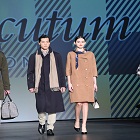
Aquascutum, the acclaimed luxury fashion label from the UK, revealed its rich British heritage and timeless aesthetics at the fashion show held here on Sept 8 in CENTRESTAGE.
“As a leader in original fashion design, we supported CENTRESTAGE with this spectacular fashion show, said Shirley Chan , Executive Director and CEO, YGM Group , “ we acquired this brand a few years ago and we hold worldwide rights for this brand, Aquascutum stands for sharp sophistication and understated elegance .”
The occasion commemorated Aquascutum’s 165th anniversary , showcasing 60 different looks, including iconic pieces from the house’s archives and classic club check designs that highlight the impeccable craftsmanship and timeless appeal. An exclusive preview of label’s FW 16 and SS17, menswear and womenswear collection showcased its creative reinterpretation of classic yet modern wardrobe staples embodying luxury and authenticity. The pioneer brand in waterproof wool paid homage to the quintessential British style, with its signature look on the ramp.
Aquascutum founded in 1851, by a quality tailor-John Emary with the mission to provide stylish protection from unpredictable British weather. YGM Trading company acquired the license for Aquascutum for HK and Greater China in 1998, later in 2009, it acquired intellectual property rights for Asia and in 2012 YGM took complete control of brand by acquiring globally its UK arm
"As US and parts of Europe gears up for elections, the timeline for the much anticipated Transatlantic Trade and Investment Partnership (TTIP) between EU and the US, seems to get pushed further. As per Hong Kong Trade Development Corporation (HKTDC), the US and the EU together account for 47 per cent global GDP and 29 per cent of world trade and the TTIP is undoubtedly the world’s largest trade and investment agreement. Despite Brexit, both US and EU indicate 2016 as the timeline. "
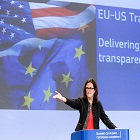
As US and parts of Europe gears up for elections, the timeline for the much anticipated Transatlantic Trade and Investment Partnership (TTIP) between EU and the US, seems to get pushed further. As per Hong Kong Trade Development Corporation (HKTDC), the US and the EU together account for 47 per cent global GDP and 29 per cent of world trade and the TTIP is undoubtedly the world’s largest trade and investment agreement. Despite Brexit, both US and EU indicate 2016 as the timeline. Hence, if the deal is concluded TTIP will be the key to strengthen transatlantic trade and investment link, providing a major boost to economies on both sides.TTIP and its relevance for the US, EU
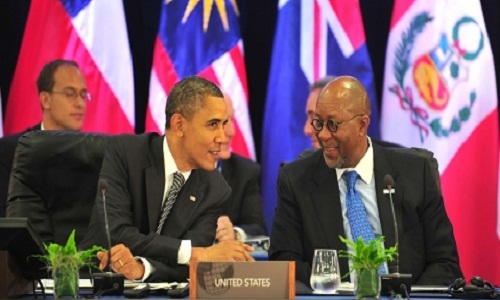
TTIP is an ambitious, comprehensive and high-standard bilateral trade and investment agreement aimed at creating opportunities for businesses, workers and farmers on both sides of the Atlantic. It is intended to boost transatlantic trade and investment linkages at a time of modest economic growth by eliminating customs duties, removing or greatly reducing red tape and tearing down barriers that impede trade both in goods and services. This in turn is expected to add new employment opportunities to the existing 13 million plus jobs that are supported by transatlantic trade and investment.
The US is already the EU’s largest export market and its largest source of FDI, while the EU is the US’s second largest market (after Canada) and also its largest source of FDI. TTIP's eventual impacts on both transatlantic and global economic growth and investment will undoubtedly be very substantial. Although there have been advanced talks, the process has faced opposition in EU from consumer, environmental, labour and other civil society groups who strongly believe TTIP would lessen or outright dismantle EU protections and standards. There also appears to be a growing scepticism towards free trade in the US as the presidential campaign heats up.
Moreover Brexit may not have an immediate impact on the EU negotiating position but the impact of British departure will increase gradually. As a strong supporter of trade liberalisation, the UK could have been expected to act as a facilitator during the negotiations and its absence is likely to make a final deal harder to achieve as certain EU members may feel more emboldened to make tougher demands in various areas that may not be acceptable to the US. Post Brexit , it is believed that the overall value of TTIP for the US will diminish somewhat if the UK is taken out of the equation as UK is the largest market for US exports in the EU, taking up the lion’s share of more than 20 per cent of total shipments to the EU in 2015.
TTIP’s implication on global trade rules
The impact of TTIP would probably be moderate over the short term as new rules and regulations are likely to be phased in gradually. However, its longer-term implications are expected to be significant. An Ecorys report projects GDP to be 0.5 per cent higher each year for the EU and 0.4 per cent higher for the US after TTIP is fully implemented. Meanwhile, wages for both high- and low-skilled workers are expected to go up by 0.5 per cent in the EU, compared with 0.3 per cent for high-skilled workers and 0.4 per cent for low-skilled workers in the US. Total EU and US exports are expected to increase by 8.2 per cent and 11.3 per cent respectively, with a 27 per cent increase in EU exports to the US and an almost 36 per cent gain in US exports to the EU.
TTIP also has long term impact on multilateralism and global trade rules as it represents an unprecedented effort to complement traditional tariff liberalisation with broad-ranging commitments on regulatory co-operation and a joint rules-based framework for bilateral trade and investment. TTIP will thus boost global trade rules for decades to come depending on the level of ambition of US-EU regulatory cooperation and coherence efforts which can result in globally-prevalent regulations and standards.
The prime body of Australian superfine wool growers, Australian Superfine Wool Growers Association (ASWGA) has said farmers need to market ethical production to retailers or else they will not earn premium prices. The Association’s vice president Noel Henderson is of the view there was only a negligible price premium for the industry. He said it is clear retailers were not paying for products alone. He explained finer micron wool of 14 or 15 micron are pretty much at par with wool that's 17, 18, 19 microns at the moment. He pointed out many producers were abandoning superfine wool production altogether, while others were remaining in the industry simply because they were driven by passion.
The ASWA is looking at how to develop guidelines for their members that will make them acceptable on an international scale. Experts also blame oversupply for the lack of premium prices for superfine wool. A recent annual merino ram sale in Gippsland, Victoria, saw a record clearance rate and strong prices. But it was clear the one area where farmers were not spending was in superfine wool traits.
Whether the apparel sector benefits from GST depends on the tax slab it comes under. The Tirupur knitwear cluster feels apparels are essentials and so should attract a lower rate slab considering that the cumulative tax on textile products, including the non-availability of input tax credit on the inter-state purchase of cotton and other raw materials, presently comes to only around 7 to 8 per cent.
The view is that any classification in the slab above the lower rate can only make knitwear products from the cluster not getting much out of the GST regime except from the logistical point of view. If the revenue neutral rate is fixed at around 15 to 15.5 per cent, the lower rate slab would probably be around 12 per cent. The Tirupur knitwear cluster is predominantly a micro, small and medium enterprises hub.
GST is expected to transform India into a common market, eliminate inefficient tax cascading and go a long way in boosting the manufacturing sector. Simply halving the delays due to road blocks, tolls and other stoppages could cut freight times by 20 to 30 per cent and logistics costs by an even higher 30 to 40 per cent. This can probably boost the competitiveness of India’s key manufacturing sectors by 3 to 4 per cent of net sales. However, branded apparels may get costlier with GST.
Textile wastes are now being used as material for building construction. Researchers in Europe have developed a panel with textile waste that improves both thermal and acoustics of buildings and reduces energy impact associated with the production of construction materials and greenhouse gases emissions.
The textile waste has been reintroduced in the productive chain in order to obtain the panels for interior fittings used in construction. These panels can enhance the thermal behavior by reducing twice the thermal conductivity of other commercial materials. At the same time, the introduction of textile fibers can also improve the acoustic behavior of the panels in terms of sound absorption.
The use of recycled materials contributes to significant reductions of energy consumption derived from the manufacturing process while reducing the environmental impact on its incineration and storage at landfills. Used waste does not require any special treatment since they are remnants of quality control products such as manufacturing off cuts or remnants of threads. Because of these environmental issues, an European law was enacted in 2002 in order to encourage the management and recycling of material waste. There are about 5.8 million tons of textile waste discarded in the European Union every year, and only 25 per cent of this waste is recycled.
Following the signing of a deal between the Ministry of Trade and Industry and two companies to construct a garment and footwear factory in the Kigali Special Economic Zone, (KSEZ), textiles in Republic of Rwanda is set to get a boost. While Albert Supply Rwanda will construct a garment factory, Rwantan will be principally into making of belts and shoes. As part of policy of promoting local factories in the textile and footwear industry, the government allocated KSEZ to investors in order to ease the process of land acquisition and construction of factories. However, the minister said the land meant for industries in the SEZ is going to be expensive. One hectare of land in the SEZ would cost $535,000.
With the help of Minicom’s 2016-2017 budget, the government purchased five hectares of land in the SEZ to facilitate investors in the textile and footwear factories. Albert Nsengiyumva, the proprietor of Albert Supply said his company will commence construction activities and the plant will be operational by end of next year. On the other hand, Bede Bedetse, the owner of Rwantan said that upon completion, his factory will produce high quality shoes and belts similar to those imported from abroad.

